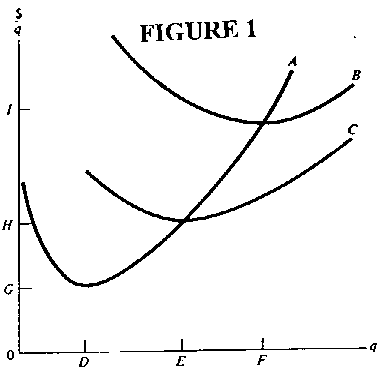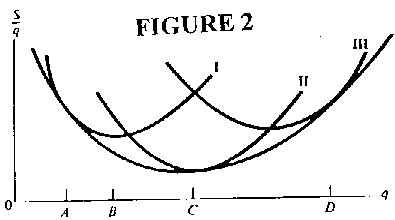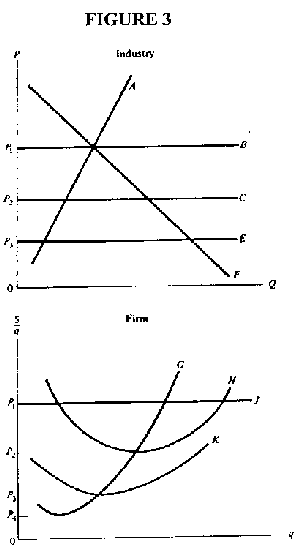


A. Carefully define the law of diminishing marginal returns. (5 points)2. Below are the short-run average total cost schedules for three plants of different size which a firm might build to produce its product. Assume that these are the only possible sizes of plants which the firm might build. What is the long-run average cost schedule for the firm? Show it in the second table below and briefly explain how you arrived at your results. (10 points)
B. Explain why the law of diminishing marginal returns determines the "U" shape of the short-run marginal cost curve. (5 points)
C. Does the law of diminishing marginal returns explain why the long-run average cost curve is "U" shaped? Why or why not? (5 points)
| Plant Size X | Plant Size Y | Plant Size Z | |||
| Output | ATC | Output | ATC | Output | ATC |
| 5 | $10 | 5 | $13 | 5 | $72 |
| 10 | 9 | 10 | 12 | 10 | 65 |
| 15 | 8 | 15 | 11 | 15 | 52 |
| 20 | 7 | 20 | 10 | 20 | 41 |
| 25 | 6 | 25 | 8 | 25 | 33 |
| 30 | 9 | 30 | 7 | 30 | 20 |
| 35 | 12 | 35 | 9 | 35 | 15 |
| 40 | 18 | 40 | 12 | 40 | 14 |
| 45 | 20 | 45 | 17 | 45 | 12 |
| 50 | 23 | 50 | 19 | 50 | 14 |
| 55 | 29 | 55 | 25 | 55 | 20 |
| 60 | 31 | 60 | 33 | 60 | 30 |
|
Output |
Long-Run
Average Cost |
Plant Size
Used (i.e., X, Y, or Z) |
| 5 | ||
| 10 | ||
| 15 | ||
| 20 | ||
| 25 | ||
| 30 | ||
| 35 | ||
| 40 | ||
| 45 | ||
| 50 | ||
| 55 | ||
| 60 |